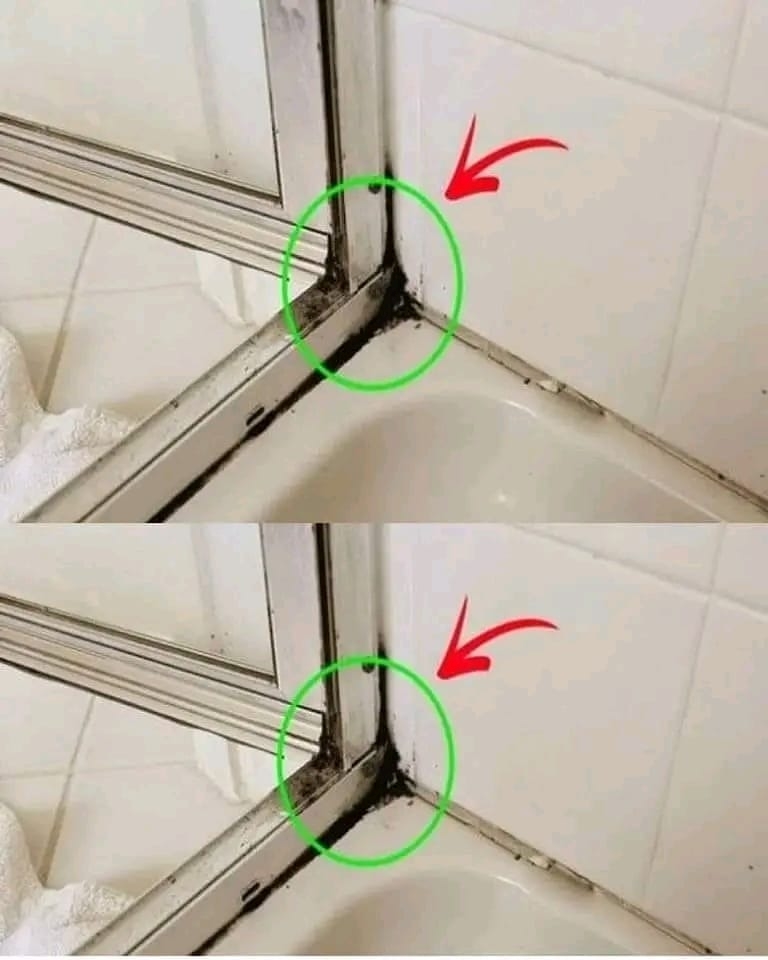Mildew on shower silicone can be a frustrating eyesore that’s tough to eliminate. Those black stains surrounding your beautiful tiles are stubborn, and no amount of scrubbing seems to make them disappear. Sound familiar? Don’t worry—there’s an easy and highly effective way to get rid of silicone mold and restore your shower to its former glory. With the right tools and a simple cleaning solution, you can make those silicone joints shine like new in no time.

Mold thrives in damp, humid environments, making your shower the perfect breeding ground. Over time, it settles into the silicone joints, creating dark, unsightly stains. If left untreated, not only can it ruin the appearance of your bathroom, but it may also pose health risks, particularly for those with allergies or respiratory issues. The good news is that you don’t need harsh chemicals to tackle the problem. A homemade cleaning solution made from white vinegar, warm water, and baking soda can work wonders.
Here’s how to prepare the solution and use it to banish mildew effectively. Start by gathering the ingredients: white vinegar, warm water, and baking soda. These three household staples are well-known for their cleaning properties. Vinegar is a natural disinfectant that kills mold spores, baking soda acts as a gentle abrasive, and warm water helps to loosen grime. Together, they create a powerful yet eco-friendly cleaning solution.
To mix the solution, follow these proportions: use ¼ cup of warm water, ¾ cup of white vinegar, and 2 tablespoons of baking soda. Combine all three ingredients in a bottle. It’s best to use a spray bottle for easy application, but any bottle with a secure lid will do. After adding the ingredients, shake the bottle well to ensure the baking soda dissolves and mixes evenly with the vinegar and water.
Once your cleaning solution is ready, it’s time to tackle the mildew stains. Begin by pouring or spraying the solution directly onto the affected silicone joints in your shower. Make sure the mold-covered areas are thoroughly saturated. The solution needs time to work its magic, so let it sit for at least 30 minutes. During this time, the vinegar will break down the mold, and the baking soda will help lift stubborn stains.
After the solution has had time to penetrate the mold, grab an old toothbrush. The bristles of a toothbrush are perfect for scrubbing the silicone joints, as they can easily reach into small crevices. Use firm but gentle pressure to work the solution into the mildew stains. You’ll likely notice the black spots beginning to fade as you scrub. Take your time and ensure that every inch of the stained silicone is addressed.
Once you’ve finished scrubbing, rinse the treated areas thoroughly with warm water. This step is essential to remove any residue from the cleaning solution and to ensure that all loosened mold is washed away. After rinsing, take a clean, dry cloth and wipe down the silicone joints. Drying the area is important to prevent new mold from forming, as lingering moisture can encourage mildew growth.
If the stains persist after your first attempt, don’t worry. Some stubborn mold spots may require a second treatment. Simply repeat the process, allowing the solution to sit for another 30 minutes before scrubbing and rinsing again. With a little patience and persistence, even the most persistent mildew can be eliminated.
To keep your shower silicone looking fresh and mold-free, it’s a good idea to adopt some preventative measures. After each shower, use a squeegee or towel to remove excess water from the tiles and silicone joints. Ensure your bathroom is well-ventilated by using an exhaust fan or opening a window to reduce humidity. Regularly wiping down your shower with a vinegar solution can also help keep mildew at bay.
In conclusion, getting rid of shower silicone mildew doesn’t have to be a tedious or costly task. With a simple homemade cleaning solution of white vinegar, warm water, and baking soda, you can effectively tackle mold and restore the pristine look of your bathroom. By following these steps and maintaining a routine cleaning habit, you’ll not only enjoy a cleaner shower but also a healthier, more pleasant living environment. So, the next time you see those black stains creeping up your silicone joints, you’ll know exactly what to do!





